Introduction – The New Era of Product Data Management
In the modern business landscape, customers expect accurate, detailed, and consistent product information at every interaction—whether they’re browsing your website, checking a marketplace listing, or speaking to a sales representative.
If your ERP, CRM, and eCommerce systems operate in silos, it’s only a matter of time before inconsistent product data costs you sales, damages brand trust, and slows your operations.
That’s where PIM integrations come in.
A Product Information Management (PIM) integration acts as the central hub for your product data—enriching it, standardizing it, and syncing it automatically across all your systems. Instead of juggling manual updates between your ERP, CRM, and eCommerce platform, you have one source of truth powering every channel.
In this comprehensive guide, we’ll break down what PIM integration is, why it’s essential, the benefits, best practices, implementation steps, and how B2Sell PIM makes the entire process easier, faster, and more profitable.
What is PIM Integration?
PIM integration is the process of connecting your Product Information Management system with your other core business systems, including:
- ERP (Enterprise Resource Planning) – Manages stock levels, pricing, procurement, and supply chain data.
- CRM (Customer Relationship Management) – Stores customer profiles, purchase history, and preferences.
- eCommerce platforms – Your online sales channels like Magento, Shopify, BigCommerce, WooCommerce, and marketplaces like Amazon or eBay.
When integrated, these systems exchange real-time, enriched product data, ensuring that everyone—from sales teams to customers—sees the same accurate information.
Why PIM Integrations Are a Must-Have in 2025
The digital commerce environment is fast-moving and unforgiving:
- Omnichannel shopping is the norm – Customers switch between devices and platforms before making a purchase.
- Product data is complex – Modern products have dozens of attributes, multiple images, videos, and localized descriptions.
- Manual updates slow you down – Human input increases errors and delays.
Without PIM integrations, your product data becomes fragmented. Stock availability might be correct in ERP but outdated in eCommerce. Pricing might match in your CRM but not on marketplaces. These discrepancies frustrate customers and hurt sales.
With integrations in place, your PIM becomes the brain, and your ERP, CRM, and eCommerce channels become the muscles—working together efficiently.
The Three Pillars of PIM Integrations
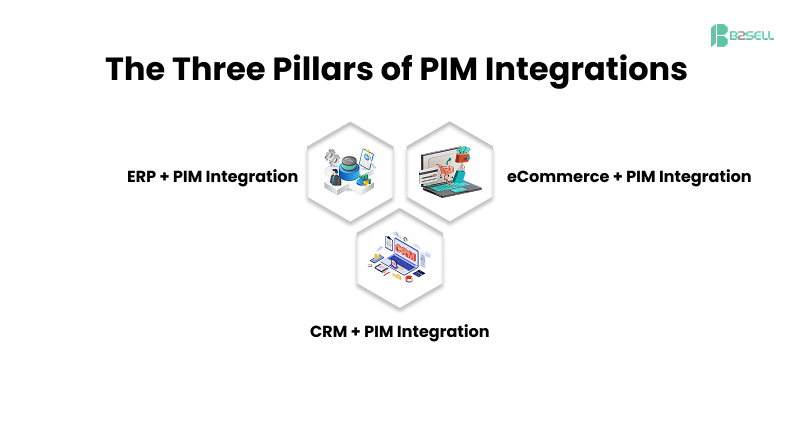
1. ERP + PIM Integration
Your ERP is your operational backbone. When connected with a PIM:
- Inventory syncs automatically – No overselling or stockouts.
- Pricing updates instantly – Reflects discounts, seasonal changes, or currency shifts.
- Data flows both ways – ERP sends SKU data to PIM; PIM enriches it and sends it back.
Example:
A distributor updates product dimensions in ERP; the PIM automatically pushes the update to all sales channels.
2. CRM + PIM Integration
Your CRM knows your customers—what they’ve bought, what they like, and what they might buy next. PIM integration helps by:
- Enabling personalized marketing campaigns with accurate product data.
- Equipping sales teams with up-to-date specs when quoting customers.
- Powering automated recommendations in email campaigns or sales portals.
Example:
A sales rep uses CRM to view a customer’s history and sees matching products with real-time specs pulled from PIM.
3. eCommerce + PIM Integration
Your eCommerce store is often your first customer touchpoint. PIM integration:
- Enables bulk product uploads and updates.
- Pushes rich, SEO-optimized content to product pages automatically.
- Syncs availability and prices instantly across channels.
Example:
Launching 500 new SKUs on Magento becomes a matter of minutes, not days, thanks to automated PIM updates.
Benefits of Connecting ERP, CRM & eCommerce Through PIM
- Single Source of Truth – No more mismatched data between platforms.
- Real-Time Updates – Changes reflect instantly across all channels.
- Better Customer Experience – Accurate information builds trust.
- Reduced Manual Work – Less data entry, fewer errors.
- Scalability – Easily add new marketplaces or regions.
- SEO Boost – Rich product descriptions and metadata improve rankings.
How PIM Integrations Work
Step 1: Data Assessment & Cleanup
Before integration, standardize product attributes, fix inconsistencies, and remove duplicates.
Step 2: System Mapping
Map attributes between ERP, CRM, eCommerce, and PIM so they align perfectly.
Step 3: Choose Integration Method
Options include:
- API-based integration – Best for real-time updates.
- Middleware – Acts as a translator between systems.
- Pre-built connectors – Fast, cost-effective, and common in solutions like B2Sell.
Step 4: Testing
Run tests to ensure all fields sync correctly without data loss.
Step 5: Go Live & Monitor
Track performance, troubleshoot issues, and refine automation rules.
Benefits of PIM Integrations
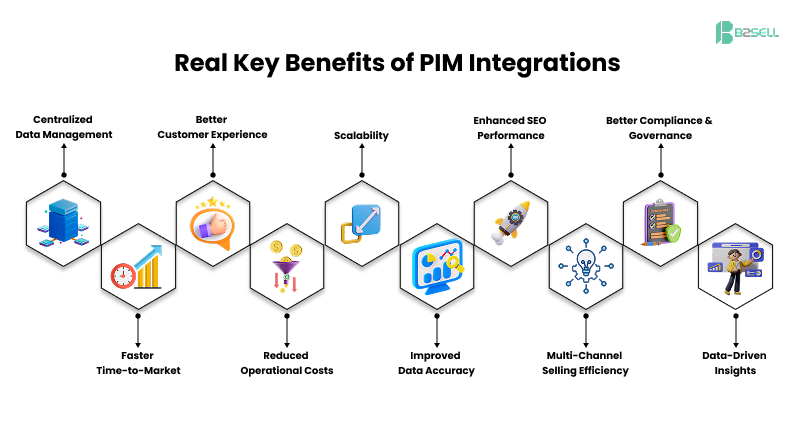
- Centralized Data Management – A single source of truth for all product data eliminates duplication, reduces errors, and ensures consistency across channels.
- Faster Time-to-Market – Add or update products once in the PIM and instantly push them to all connected platforms.
- Better Customer Experience – Accurate, enriched product details build trust, enhance shopping confidence, and boost conversions.
- Reduced Operational Costs – Automation replaces repetitive manual work, cutting errors and saving time.
- Scalability – Easily manage growing product catalogs and expand to new sales channels without extra complexity.
- Improved Data Accuracy – Automatic synchronization ensures product details, pricing, and stock levels are always correct.
- Enhanced SEO Performance – Consistent, enriched product data with keywords improves search visibility and rankings.
- Multi-Channel Selling Efficiency – Seamlessly manage product listings across marketplaces, eCommerce sites, and partner portals from one platform.
- Better Compliance & Governance – Maintain consistent product standards, meet industry regulations, and manage multilingual or regional variations easily.
- Data-Driven Insights – Centralized analytics help track product performance, customer engagement, and market trends.
Common Challenges in PIM Integration (and How B2Sell Solves Them)
- Data Silos – Cause inconsistent product information across systems. B2Sell Solution: A centralized PIM hub that unifies all product data.
- Complex ERP Setup – Leads to slow and complicated deployment. B2Sell Solution: Pre-built ERP connectors for quick, seamless integration.
- Multi-Channel Sync Delays – Result in missed sales opportunities and outdated listings. B2Sell Solution: Real-time API updates to keep all channels current.
- High Maintenance Costs – Make integration projects expensive to maintain over time. B2Sell Solution: Scalable, cost-effective integration plans.
Industry-Specific Use Cases
Retail & eCommerce
Manage thousands of SKUs, launch products faster, and keep online/offline channels in sync.
Manufacturing
Provide distributors with detailed, always-accurate technical specs.
Wholesale & Distribution
Streamline bulk product uploads and update catalogs for B2B clients instantly.
Best Practices for Successful PIM Integration
- Start with high-priority channels before expanding.
- Automate wherever possible to reduce manual work.
- Involve all stakeholders—IT, sales, marketing, operations.
- Regularly audit data to maintain quality.
FAQs
Q1: What is the main advantage of PIM integration?
It centralizes and enriches product data, ensuring all platforms display consistent, accurate information.
Q2: Can PIM integration handle multiple languages and currencies?
Yes—advanced systems like B2Sell PIM manage localized data for global markets.
Q3: How long does it take to integrate PIM with ERP, CRM, and eCommerce?
Depending on complexity, it can take weeks to a few months. Pre-built connectors speed this up.
Q4: Does PIM integration improve SEO?
Absolutely. Consistent, enriched product descriptions and metadata boost search rankings.
Q5: What if my ERP is custom-built?
B2Sell offers custom API integrations to connect even proprietary systems.
Why Choose B2Sell for PIM Integrations
B2Sell’s PIM integration solutions are built for businesses that want speed, accuracy, and scalability without the headaches of custom coding.
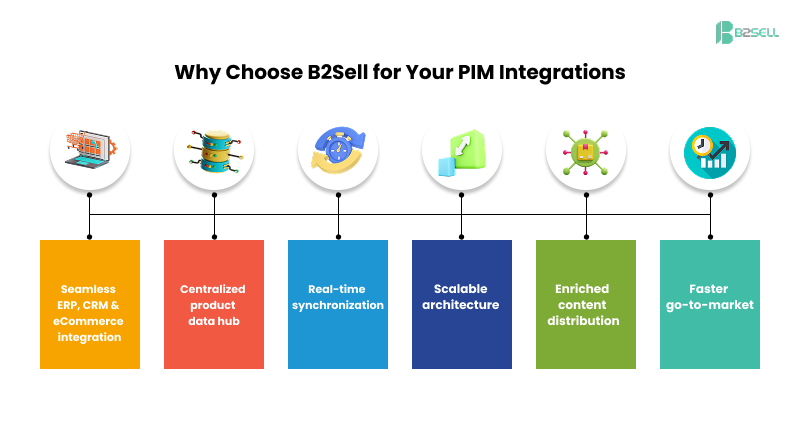
Why Choose B2Sell?
- 40+ Ready-Made Connectors – From Magento to Salesforce to Epicor P21.
- Seamless ERP, CRM, and eCommerce Sync – Real-time data flow across platforms.
- Cloud-Based, Scalable Architecture – Grow without integration bottlenecks.
- Automation-First Approach – Less manual work, more focus on selling.
- Dedicated Support Team – From setup to optimization.
B2Sell PIM Integrations
Streamline your product management with seamless B2Sell PIM integration. Centralize data, enrich content, and distribute across multiple channels effortlessly. Boost efficiency, minimize errors, and accelerate sales growth with a platform built to scale your business.
Whether you’re running a sm all online store or a global enterprise, B2Sell’s PIM solutions give you the flexibility and power to stay ahead in a competitive digital marketplace.
Conclusion – Make Your Product Data Work Harder
In today’s fast-paced market, PIM integration is no longer optional—it’s a strategic necessity. By unifying ERP, CRM, and eCommerce systems, businesses can achieve data accuracy, operational efficiency, and customer trust.
With B2Sell PIM Integrations, the complexity of managing product data across multiple platforms disappears. Whether you’re a growing eCommerce brand or a global distributor, B2Sell gives you the tools to centralize, enrich, and deliver product information seamlessly.
Ready to simplify your product data management?
👉 Schedule Your Free Demo with B2Sell PIM Today and experience the future of integrated product management.

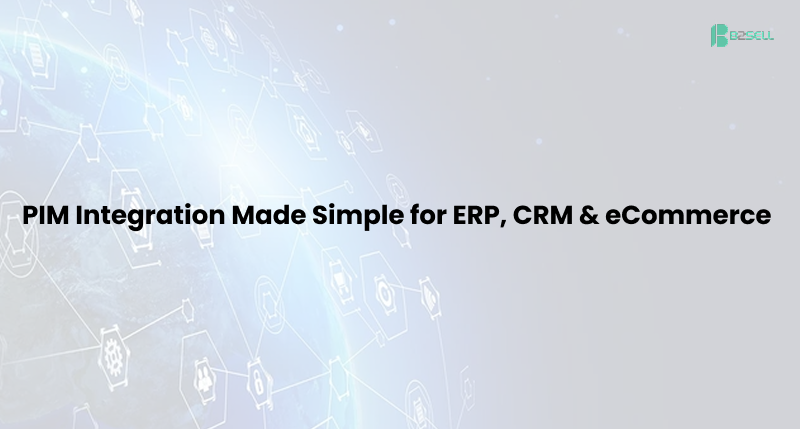

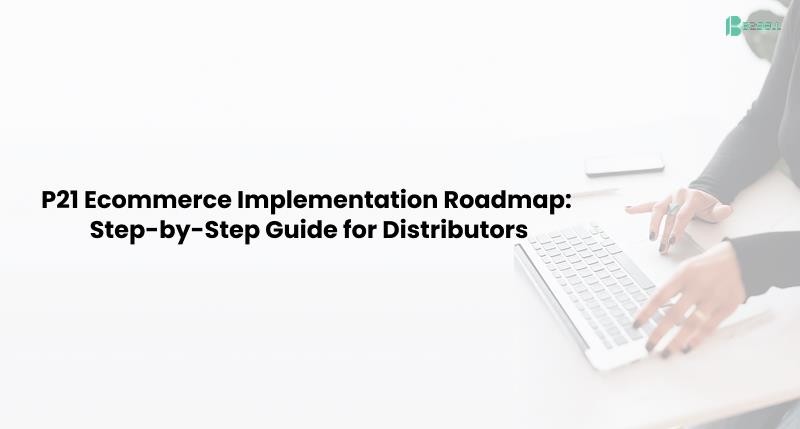
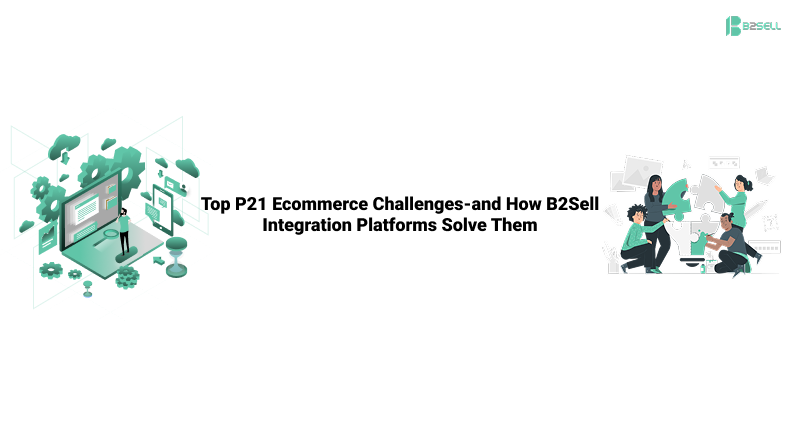


.png)